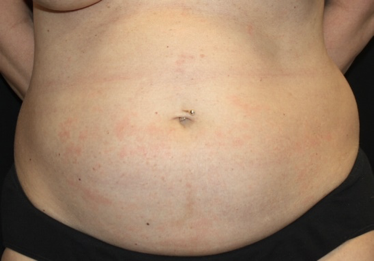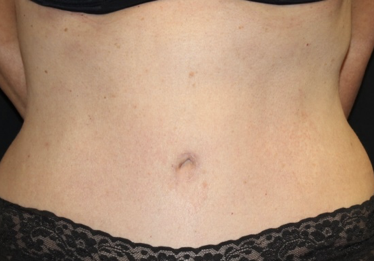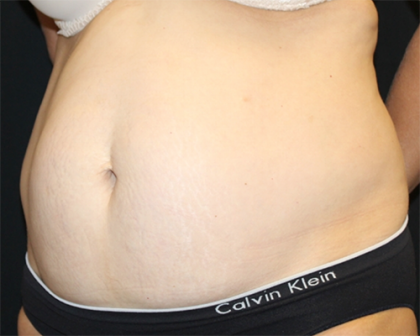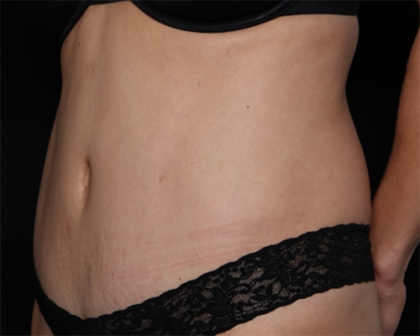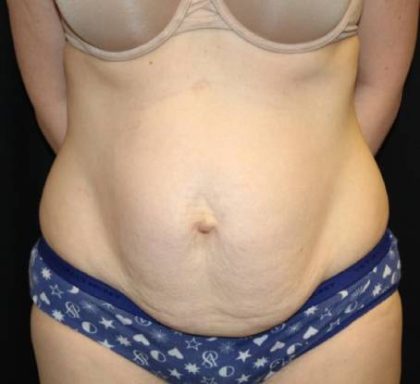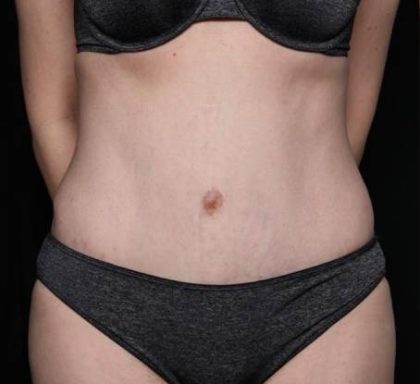Male Abdominoplasty
Offered at our convenient location in New Jersey
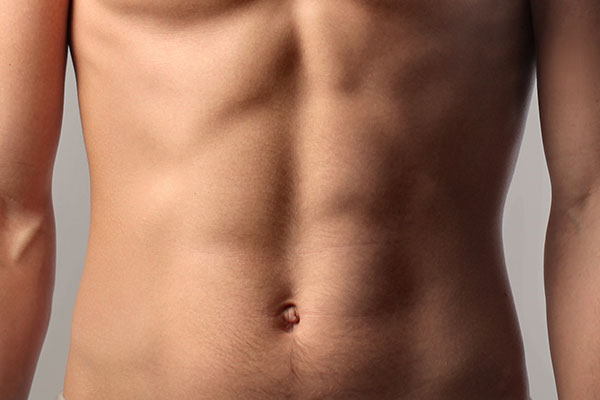
Some men find it difficult to lose their excess stomach fat or protruding abdomen, even with regular exercise and smart dietary choices. This laxity of the abdominal wall and muscle may be a result of fluctuations in weight, age or heredity.
Abdominoplasty (tummy tuck surgery) can dramatically improve your physique and self-confidence, and help you look and feel years younger. Board Certified Plastic Surgeon Brian S. Glatt, MD, FACS has many years of experience in male abdominoplasty surgery, and is well known for his remarkable results. If you cannot achieve the well-toned abdomen you desire, contact Premier Plastic Surgery Center of New Jersey to schedule an appointment with Dr. Glatt to determine if you are a candidate for an abdominoplasty.
Contents
- 1 The Procedure
- 2 Abdominoplasty with Liposuction
- 3 Skin Only Abdominoplasty (no muscle tightening)
- 4 Contact Premier Plastic Surgery Center of New Jersey
- 5 Before and After Photos
- 6 More Information about Abdominoplasty – By Dr. Glatt
- 7 Where is the abdominoplasty procedure performed?
- 8 What is the recovery like following abdominoplasty surgery?
- 9 Is liposuction part of an abdominoplasty procedure?
- 10 What to Expect Following Your Abdominoplasty
- 11 Drain Care Instructions
- 12 Things to Report to Our Office
- 13 Contact Premier Plastic Surgery Center of New Jersey
The Procedure
Although a full abdominoplasty requires an incision along the lower abdomen, the scar is kept extremely low, just above the pubic hairline.
In addition to the removal of excess skin and fat, the stretched out deeper abdominal wall itself is tightened, which literally redefines the shape of the stomach. The abdominal skin is then perfectly tailored to the newly defined inner shape, and the excess skin removed. Dr. Glatt often performs liposuction of the flanks (or sides) to create a more aesthetically pleasing overall contour. Patients can generally return to work two weeks after surgery, and can gradually return to exercise and sports after three to four weeks. Abdominoplasty patients come to Premier Plastic Surgery Center of New Jersey from all parts of the Tri-State Region and the Northeast. To schedule an abdominoplasty consultation, contact Dr. Glatt’s office today.
Abdominoplasty with Liposuction
An abdominoplaty often includes liposuction so patients can recieve their best outcome.
While an abdominoplasty procedure is the best surgical solution for tightening stomach muscles and eliminating loose, unwanted skin, this procedure alone cannot remove the fat deposits on the sides of the abdominal region. For this reason, liposuction is included as part of the majority of Dr. Glatt’s abdominoplasty surgeries, allowing him to achieve the best overall result for his patients.
Skin Only Abdominoplasty (no muscle tightening)
Men who have loose, sagging skin but good muscle integrity may be candidates for a Skin Only Abdominoplasty. This type of adominoplasty leaves the interior abdominal wall intact and only removes the excess skin. Men who are candidates for a Skin Only Abdominoplasty typically have an athletic build and minimal abdominal weakening.
The major advantage of a Skin Only Abdominoplasty is a decrease in the amount of post-operative recovery time and restrictions, allowing you to return to your regular activities sooner.
Contact Premier Plastic Surgery Center of New Jersey
To learn more about abdominoplasty, contact Premier Plastic Surgery Center of New Jersey today and schedule an abdominoplasty consultation with our Board Certified Plastic Surgeon.
Before and After Photos
More Information about Abdominoplasty – By Dr. Glatt
Abdominoplasty surgery produces dramatic results. When I say dramatic I mean this in an entirely positive way, as it is not a subtle outcome. The result is something that is immediately apparent since the overall contour and appearance of the abdominal area has been greatly improved.
I do not recall a patient who has regretted undergoing this procedure, and the satisfaction following abdominoplasty surgery remains extremely high.
An abdominoplasty produces long-term, flattering results.
A vast majority of patients undergoing abdominoplasty surgery are not overweight. Instead, they are people who tend to be extremely physically fit but have developed laxity of their overlying skin and soft tissues as well as the abdominal wall. Weight gain can cause stretching of the overlying skin and soft tissues as well as the abdominal wall, which can be stretched beyond the body’s capacity to fully recoil. When elasticity is lost in the structures, the laxity that develops cannot be corrected by any means of exercise. In these cases, surgical intervention such as abdominoplasty is the only way to definitively correcting this problem.
In addition, abdominoplasty surgery is long lasting. It is not a procedure that needs to be repeated every so often and, in fact, it is quite rare to perform a secondary abdominoplasty surgery in my practice. Results should last at least ten to fifteen years and the procedure may never need to be repeated during the course of the patient’s lifetime.
I dislike the term “tummy tuck” as this gives the patient an impression that the operation is small, which it is not. I am very straightforward with my patients when describing this procedure and the correct and more formal term is abdominoplasty. An abdominoplasty begins with an incision that is very low on the abdomen, most commonly just at the edge of the pubic hairline. The scar extends out to the sides reaching just about hip to hip in most people. The scar is quite long; however, it is kept very low at the level of the pubic hairline. The incision extends through the skin and underlying soft tissue until the abdominal wall is reached. At this point, the skin and soft tissue is peeled off of the patient’s abdominal wall all the way up to the middle portion of the ribs, called the xiphoid process. Next the entire abdominal wall and muscle layer is exposed and evaluated.

Dr. Glatt will artfully reduce unnecessary tissue and sculpt your abdomen.
After the abdominal wall is tightened the skin and soft tissue which has been raised is pulled down like a window shade and the excess redundant tissue excised, eliminating all of the laxity as well as redundancy of the excess overlying stretched out skin. In this way, the outer tissues are better matched in contour to the deeper frame. Most commonly when the skin is removed the patient is placed into a flexed position on the operating room table. Just imagine you are standing up straight with an overlying shirt taut against your body. If you were to bend over the shirt wrinkles, and laxity is developed. This is exactly what happens to the abdominal skin. Obviously, we know skin continues to stretch out so you want to inset and resect the skin in as tight a fashion as possible. The deeper tissue, as well as the overlying skin, is then closed, using all internal absorbable stitches.
Your natural abdominal contours and belly button will be preserved.
Many people are very curious about what happens to the belly button or umbilicus. When the skin and soft tissues are being raised, once the level of the umbilicus is reached, the structure is circumferentially incised and separated as a stalk attaching to the abdominal wall itself. This leaves a hole in the overlying abdominal skin flap where the belly button used to be. The belly button stays attached to the patient’s abdominal wall on this stalk and when the excess skin is resected and excised I feel underneath the flap where the belly button is located, mark that spot and make a new hole in the skin for the belly button to be brought through. This means that most patients do in fact also have a scar right around their belly button at the completion of an abdominoplasty procedure. Occasionally not all of the skin can be removed which includes the prior site of the belly button. In this case, the area needs to be closed primarily, producing a small vertical scar very low on the abdomen, close to the incision. If this is likely to occur, I advise my patients preoperatively and make them very aware of it. This scar typically goes on to heal very well and fade over time.
Where is the abdominoplasty procedure performed?
The procedure is performed under general anesthesia and typically takes between three to four hours to complete.
I perform all my abdominoplasty procedures in a hospital setting, most commonly Morristown Medical Center. Patients are admitted to a private room in the hospital on a floor that is very familiar in taking care of patients who have just undergone abdominoplasty surgery. A pain pump is provided, which allows the patient to press a button when pain medicine is needed, making sure they are kept comfortable postoperatively. All of my patients stay overnight in the hospital and are discharged the following day. Many patients believe that this procedure is extremely painful but, in fact, it is not the case. It is comfortable overall; however, you are stuck in a flexed or hunched over position since you are tailored that way as part of the closure. Patients can gradually stand up straighter and straighter every day and in seven to ten days have no problem standing up completely straight and lying down flat in bed. Until that time, they do need to stay flexed in bed, on their back with their legs elevated, as well as elevating the head of the bed.
Surgical drains will be used to improve your healing process.
Two surgical drains, called Jackson-Pratt drains, are routinely used at the time of the surgery. I use drains that are round in orientation therefore they do not hurt when removed. The drains are little plastic tubes that are left inside under the surface of the skin, which come out through small stab holes in the pubic area. They are sutured in place so they cannot be inadvertently pulled out or fall out accidentally. These tubes outside the body then connect to a small plastic bulb called a drain, which is placed on a very low level of continuous suction. Drains are extremely easy to manage and patients are instructed on how to care for them during their hospital stay.
“I allow all my patients to shower with the drains in place.”
Though drains generally do not cause any problems, they are extremely annoying and will quickly become the most irritating part of recovery. Fortunately, these drains are removed at the first postoperative visit which is scheduled ten days after surgery. At this visit, the small suture holding the tube in place is cut and the drain is simply pulled out without any discomfort; the hole closes up on its own. Patients also are placed in an abdominal binder at the completion of the surgery to provide a high level of compression over the abdomen. This binder is worn for 3 to 6 weeks following surgery. Patients tend to like the binder and are very comfortable with the additional support it provides. Many of my patients continue to use the binder several months after the surgery as a way to gain additional support following the procedure.
What is the recovery like following abdominoplasty surgery?

The post-operative period is just as important as the procedure itself and no patient should undergo abdominoplasty surgery without being fully informed of the recovery and post-operative restrictions.
Being fully prepared to undergo a proper recovery is part of ensuring outstanding results. I tell my patients that the first week following abdominoplasty surgery they will not be able to take care of anybody other than themselves. In fact, patients will typically tend to need someone to help them with small activities of daily living. During the first few days even going up or down the stairs can be somewhat of an effort and they will require a bit of assistance for this. Small things such as getting on and off the toilet, getting in and out of the shower, and in and out of bed will also require some assistance during the first few days.
Patients tend to get stronger very fast and by seven to ten days are more independent.
Most patients are unable to drive for approximately a week and half and I prepare my patients to make other arrangements if anybody needs to be driven by them during this period. It is not that I do not let them drive, but they are physically unable to drive for approximately seven to ten days. By three weeks, patients are much more mobile, driving, able to perform all activities of daily living without any problem, and are back to their normal routines for the most part. I do not allow my patients to do anything that would work up a sweat which includes any kind of aerobic exercise or activity for three weeks following surgery. In addition, there is no lifting, pushing, pulling, straining, or twisting for six weeks after surgery; this includes upper body work.
I allow patients to return to aerobic activity including walking, running, jogging, elliptical, or a sit down bike after three weeks.
However, activities involving any kind of intensive stretching would have to wait until six to twelve weeks. I do not allow patients to exercise abdominal muscles for three months following surgery. These restrictions are intended to minimize any potential complications such as bleeding, fluid collection, or poor wound healing which are easily avoided by following all postoperative instructions. By six weeks, I consider patients to be fully recovered, although, there is a small amount of swelling which persists for three to nine months following surgery. This is an operation that is outstanding in three weeks, even better at six weeks, and continues to improve thereafter for up to a year, when most healing is thought to be complete. The surgical scar may still have not matured, as it typically takes three to twelve months for a scar to completely fade out. In some patients it takes much longer, sometimes up to two years. The scar however, will fade over time.
Is liposuction part of an abdominoplasty procedure?

Board Certified Plastic Surgeon Brian S. Glatt MD, FACS and his experienced staff believe a vital component to an optimal surgical outcome is advance preparation.
For this reason, all surgical patients are given their post-operative prescriptions and directions for the use of each medication prior to surgery. All patients are also provided with specific written post-procedure instructions, as well as information outlining what to expect following their abdominoplasty surgery.
What to Expect Following Your Abdominoplasty
- You will have a support binder that will be placed on you in the operating room immediately following the procedure. This binder is to be worn constantly (24 hours a day), except when showering, for several weeks following surgery. The binder may be removed to shower, which you may begin to do 48 hours following your procedure. The binder can also be washed and allowed to air dry.
- You will initially need to keep your abdomen flexed at all times for up to 1 week. When in bed, place 2 pillows under your knees and try to prop the head of the bed up with 2 pillows also. When walking around, try to stay hunched over. By the end of the first week, you should be able to straighten out your abdomen. DO NOT push yourself or try to do too much too fast! Strenuous activity and exercise should be avoided for 3 weeks. Walking is permitted provided it is not strenuous (nothing to purposefully work up a sweat).
- You will have drains in place after surgery. You may shower with the drains 48 hours after surgery. You can safety pin them to a string or shoelace which can be loosely hung around your neck. Pat the drain exit sites dry after showering and apply some antibiotic ointment to the sites where they exit your skin. You will be given a prescription for an oral antibiotic which should be taken during the entire time that the drains are in. Make sure you continue to take your antibiotic as long as your drains are in!
- You will not need to have your sutures removed – they are all on the inside. You will have steri-strip paper tapes or a glue tape over your incisions, which can get wet in the shower. Just pat the area dry afterwards and put your binder back on. In addition, you should apply antibiotic ointment with a Q-tip inside and around the edge of your belly button, as well as to the areas where the drains exit your skin.
- You may notice numbness in the surgical area because of interruption of small sensory nerves. This is almost always temporary and will gradually improve. It may take a full year for full sensation to return to your abdomen. Be cautious of sun, heating pads, and heat lamps, etc., until sensation returns to normal.
- You may experience some pain or discomfort for a few days following surgery. Do not hesitate to take medication for this. Remember that pain medication will make you drowsy. DO NOT DRIVE while taking this medication. Pain medicine may also make you constipated, so you may need a mild over-the-counter laxative. Treat any constipation aggressively with over the counter laxatives (e.g. DulcoLax, Ex-Lax)
- You should drink extra fluids for 48 hours after your procedure to maintain fluid and electrolyte balance. Eat light meals the first day (soups, Jell-O, juices, tea, Gatorade, etc.). Then gradually progress to a regular diet. A nutritious diet is important for wound healing. You may wish to take vitamins.
- Please call our office with any abnormal reactions to the prescribed medications, such as hives or itching. Let us know if you develop a temperature of over 101 or any excessive pain, redness, or swelling.
- You should not sit for long periods of time for the first 3 weeks following surgery in order to promote circulation to your legs. If you must travel, be sure to get up and walk around every 30-60 minutes.
Please feel free to call our office with any questions or concerns. We want you to be as comfortable as possible during the healing process.
Drain Care Instructions
Drains will reduce the risk of injection and help your recovery go smoothly.
Drains are placed under the skin during surgery to remove residual blood or other fluids that may collect there. Surgical drains decrease the chance of infection, decrease the chance of fluid collections accumulating under the skin, and promote wound healing. It is important that the drain be left in place until the drain output decreases to reasonable levels (This is usually less than 30 ML over a 24 hour period). You do not need to stay in the hospital until the drain is ready to be removed. The instructions below will help you to care for the drains at home. If you have any questions, please do not hesitate to call our office.
INSTRUCTIONS FOR EMPTYING THE DRAIN
- Wash your hands.
- Remove plug from pouring spout.
- Pour drainage into measuring cup (provided to you).
- Flatten the drain container (squeeze it) and replace the plug into the spout while maintaining hold.
- Record the date, time, and amount of drainage (in cc or ml, DO NOT measure in ounces) on the recording sheet provided. In addition, note any problems you have encountered.
- Empty the containers two to three times per day.
- Do not worry if clotted material shows up in the drains. This is normal and does (from red to orange, to yellow). This is normal and to be expected. The overall amount should also decrease over time.
- You should treat the area where the drain exits your skin with some antibiotic ointment of your choice (such as Neosporin, Bacitracin, etc.) 2-3 times per day.
- You may shower with your drain in place (Occasionally, Dr. Glatt will not want you shower with your drain. He will let you know if this is the case). To do this you may put a string or shoelace around your neck and safety pin the drains to the string or you can safety pin the drains to a hanging towel. Just let soap and water run over the site – do not actively scrub the drain site. Pat the area dry with a clean towel afterwards and apply antibiotic ointment.
Things to Report to Our Office
- Redness or drainage around the drain site
- Temperature greater than 101º
- Inability to keep the drainage container flat and on suction
- Sudden stoppage of drainage fluid into the container
Contact Premier Plastic Surgery Center of New Jersey
To learn more about abdominoplasty, contact Premier Plastic Surgery Center of New Jersey and schedule a tummy tuck consultation with our Board Certified Plastic Surgeon.





